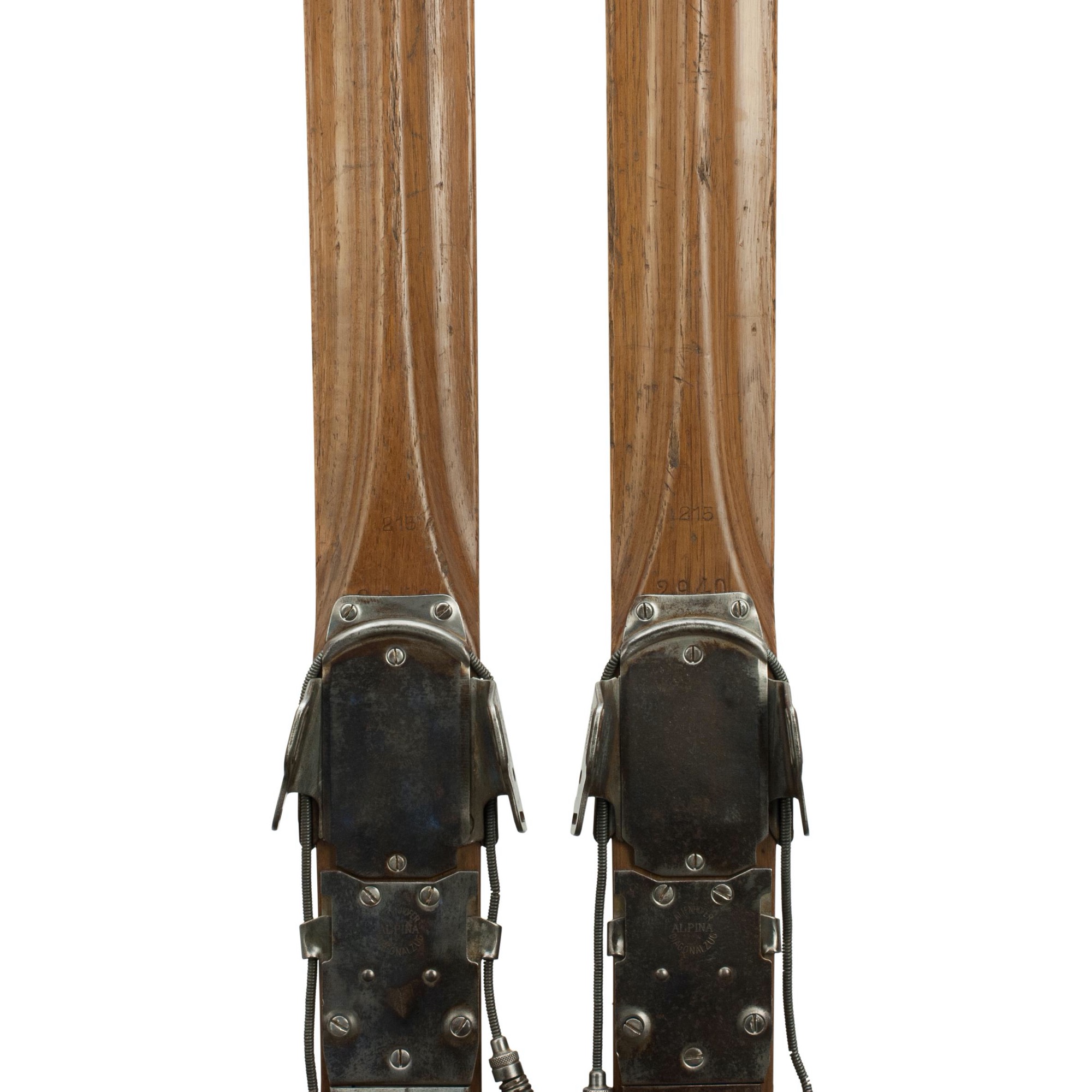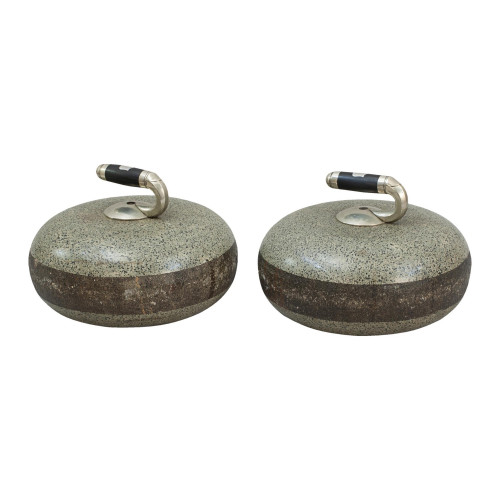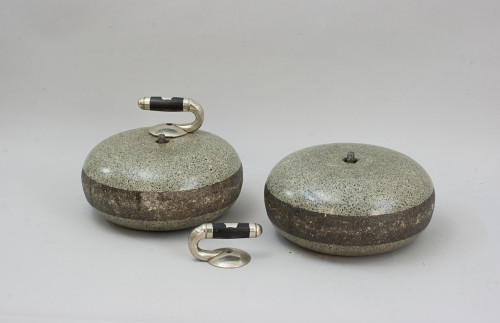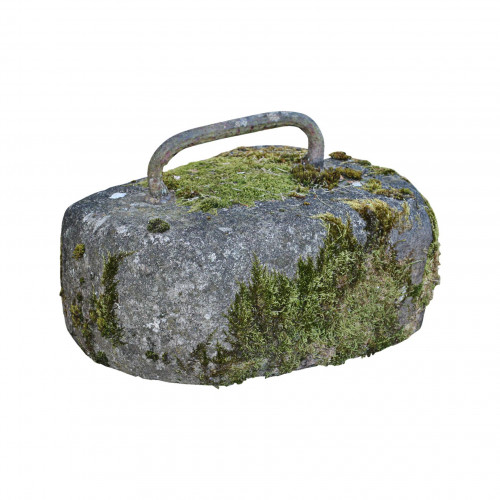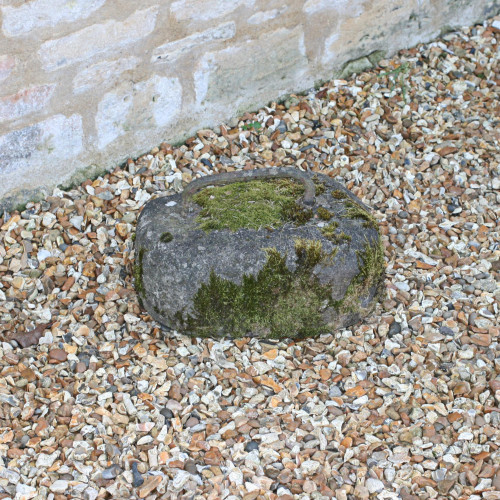- Home
- Alpine, Wintersport & Mountaineering
- General
- Vintage Gresvig Ridge Top Hickory Skis
Vintage Gresvig Ridge Top Hickory Skis
Vintage Gresvig Ridge Top Hickory Skis
26036
Pair Of Vintage Hickory Skis.
A good pair of pointed tip, ridge top skis made in Norway by Aksel Gresvig. The tips of the skis with a colourful Trademark decal, the underside embossed "GRESVIG, Oslo, Made in Norway, Super Extra Hickory". Fitted to the skis are adjustable toe irons with a cable and coiled heel spring, these were very popular from 1930's. The skis are fitted with metal edge runners and metal foot pads stamped "Attenhofer Alpina Diagonalzug". This enables the skier being able to change from diagonal to horizontal-pull (see below article from a 1935 Canadian Ski Year Book).
Aksel Gresvig was a racing cyclist, and in 1901 founded A Gresvig at Rosenkrantzgate, Oslo. His vision was to take sporting activity to the people. Gresvig acquired the Huitfeldt Ski Factory and Sports Shop in 1923, and eventually exported skis to the rest of Europe and North America. The initial "A" was removed from the company name in 1927, and it was subsequently just called 'Gresvig'.
Knut Gresvig joined the company in 1936. The ski and bicycle factories moved to Alnabru outside Oslo in 1939, when the premises at Stenersgate 4 were built. Gresvig developed a safety ski binding in 1955. This Kandahar brand was the most popular binding for cross-country skis in the 1950's and 1960's.
Canadian Ski Year Book, 1935.
The reintroduction of diagonal-pull has done more to advance downhill and slalom technique than is generally imagined. Diagonal-pull is obtained by lowering and moving back the pivot-points of the heel-attachments. The great force of this downtug is realized only after one has changed from diagonal to horizontal-pull within a short time. All skiers will not want this pull because horizontal-pull is unquestionably preferable for climbing and running on the level. The essence of ski-ing as a sport is downhill running; diagonal pull certainly increases one's control making it safer and more enjoyable. Unfortunately, few of our skiers realize that diagonal-pull is such a great aid to control and it is urged that everyone at least give it a fair trial. The simplest method of obtaining down-tug is to screw small plates, to which the heel-attachments may be fitted, below and behind the toe-irons. Some skis have a mortise through which a strap may be passed. The severity of the pull increases as the pivot-point is lowered and moved back and it is particularly recommended that one begin with a moderate down-tug at first. In every case where diagonal-pull is used, a BILPSTEIN SPRING-REEL-CLAMP or some similar device should be worn not only to save one from injuries in the event of a bad fall but also to prevent the boots from being ruined by the strain of the diagonal pull. In terrain where one is alternately climbing and running down, neither horizontal nor diagonal-pull alone will give complete satisfaction. Those wishing down-tug must either compromise with a weak pull or must use a binding that may be easily and quickly altered from one pull to the other. Naturally, the latter alternative is preferable and most bindings are now made with detachable heel-straps which may be attached either to the small plates screwed on the sides of the ski or to the toe-irons. Although giving a choice of pull, this arrangement is not perfect because the change entails removing the boots from the bindings and this becomes irksome. Consequently several bindings especially designed to enable an easy and rapid change from one pull to the other have been placed on the market. Merely by adjusting the movable pawls on the toe irons, the ATTENHOFER ALPINA-DIAGONAL may be altered from one pull to the other and having tested this binding most thoroughly, the writer feels confident in unconditionally recommending it to all skiers.
Dimensions:
1900-1949
Circa late 1930's
Hickory
Norway
Very good.
Thank you for your enquiry.
We will get back to you soon.
Please create wishlist to add this item to
RELATED ITEMS

